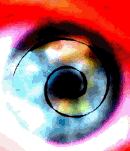Loren Coleman has been described as one of the world's leading cryptozooligists.
He's been pursuing the creatures, critters, and phenomena for 40 years, and has
chronicled his investigations in such books as
Mysterious America: The Revised Edition (NY: Paraview, 2001),
Cryptozoology A to Z (NY: Simon and Schuster, 1999),
The Field Guide to Bigfoot (NY: Avon, 1999),
Tom Slick and the Search for the Yeti (Boston: Faber and Faber, 1989),
Curious Encounters (Boston: Faber and Faber, 1985),
Mysterious America (Boston: Faber and Faber, 1983),
Creatures of the Outer Edge (NY: Warner Books, 1978),
and The Unidentifed (NY: Warner Books, 1975).
He lives in Portland Maine and is currently planning to open a
Cryptozoology themed museum in the near future. His website at
www.lorencoleman.com
is a fascinating look at one man's search for the truth.
1. What got you interested in cryptozoology?
At 12, in 1960, I was reading the books of Charles Fort, which gave me an
"open-mind" and "question authority" attitude when I saw a Japanese movie
about the Yeti, entitled "Half Human." I went to school and asked my
teachers what they knew about the Abominable Snowmen. The answers I got
were very unsatisfactory, so I began reading and researching all I could
on Yeti, Bigfoot, Sasquatch, lake monsters, and more. It has become a
livelong pursuit, passion, and part of my life.
2. Is there any way to prepare for the job?
Does it have good benefits? Do you put "cryptozoologist" in the space
for profession on your tax return?
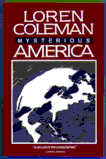 "Cryptozoologists" do not have a formal job description, per se. Various
educational backgrounds (anthropology, linguistics, zoology, biology,
etc.) are helpful, and other trainings go into making one a cryptozoologist.
I teach at a university, consult, research, and write. I believe my
accountant puts "professor/author" on tax forms.
"Cryptozoologists" do not have a formal job description, per se. Various
educational backgrounds (anthropology, linguistics, zoology, biology,
etc.) are helpful, and other trainings go into making one a cryptozoologist.
I teach at a university, consult, research, and write. I believe my
accountant puts "professor/author" on tax forms.
3. What's the majority of the job like? Is it as
exciting as it sounds?
There's lots of important but boring work, like searching through
newspaper files, tracking down witnesses, and double-checking witness backgrounds,
but the ultimate goal is thrilling. To think that you are very seriously
involved in chasing creatures and cryptids, investigating extraordinary
incidents which happened to ordinary people is, yes, exciting.
4. What's been your most interesting experience?
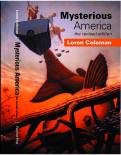 I've had so many it's hard to say one is more interesting than the next.
Examining the details of the Dover Demon case of 1977 (discussed in depth in
Mysterious America:
The Revised Edition(NY: Paraview, 2001) is high on my
list. Looking for the Loch Ness Monsters at that Scottish lake in 1999,
with my sons Malcolm and Caleb, is certainly up there. Finding apelike
tracks, hearing screeching sounds of an unknown animal, tracking panthers,
all in Illinois in the 1960s, were formative searches.
I've had so many it's hard to say one is more interesting than the next.
Examining the details of the Dover Demon case of 1977 (discussed in depth in
Mysterious America:
The Revised Edition(NY: Paraview, 2001) is high on my
list. Looking for the Loch Ness Monsters at that Scottish lake in 1999,
with my sons Malcolm and Caleb, is certainly up there. Finding apelike
tracks, hearing screeching sounds of an unknown animal, tracking panthers,
all in Illinois in the 1960s, were formative searches.
5. What's the deal with that Chupacabra carcass they
discovered in Nicaragua? Is it a dog? ...an escaped circus animal? ...a secret
government experiment gone horribly wrong?
The carcass appears to be a badly deformed dead canid, a dog, and not at
all mysterious.
6. What do you think of the on going scientific discussions about cloning
the Tasmanian Tiger or Woolly Mammoth?
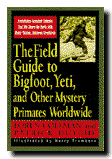 These may be more difficult to do than stated due to the problems with
reformatting the DNA structure. However, what I find more interesting is
that the Tasmanian Tiger (the Thylacine) may still be alive today. There
are active pursuits now taking place, and scores of sightings of the
Thylacine in recent years.
These may be more difficult to do than stated due to the problems with
reformatting the DNA structure. However, what I find more interesting is
that the Tasmanian Tiger (the Thylacine) may still be alive today. There
are active pursuits now taking place, and scores of sightings of the
Thylacine in recent years.
Furthermore, Pleistocene animals like the wooly mammoth may also still
survive, but the evidence for such a large animal remaining alive today
has not been forthcoming, other than some stories from the 1920s.
7. How much goat could a goatsucker suck if a
goatsucker could suck a goat?
More wood than a woodchuck could chuck wood, that's for sure. Actually,
as you know, of course, Chupacabras is translated as "goatsucker" because
they reportedly suck all the blood from goats (and other livestock).
8. What's your take on the Patterson Bigfoot footage?
On October 20, 1967, the Patterson-Gimlin film was taken. This now-classic
footage by Roger Patterson (Bob Gimlin was also there, gun at the ready)
is the best evidence we have for a population of unknown primates (variously
called Sasquatch or Bigfoot by the public) in the Pacific Northwest. I have not
seen any debunking that holds any water, and I sense the film is authentic.
9. What's up with all those reports of phantom
kangaroos jumping around the midwest?
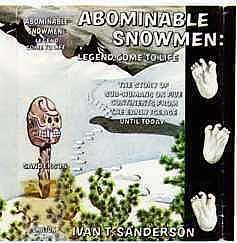 In my 1999 field guide on Bigfoot, I discuss how these kangaroos may have
more to do with giant monkey reports than kangaroos. I go into this in
more detail in
Mysterious America: The Revised Edition
(NY: Paraview, 2001). "Kangaroos" are what they "look" like but "Devil Monkeys" are what they may be.
In my 1999 field guide on Bigfoot, I discuss how these kangaroos may have
more to do with giant monkey reports than kangaroos. I go into this in
more detail in
Mysterious America: The Revised Edition
(NY: Paraview, 2001). "Kangaroos" are what they "look" like but "Devil Monkeys" are what they may be.
10. If the Chupacabra and Bigfoot got into a fight,
who would win?
Bigfoot are reported to be 6.5 - 9 feet tall. Generally, Chupacabras are
usually noted to be not much more than 4 feet tall. Bigfoot from the West
Coast are known to be quiet, retiring, and eat some small mammals but
mostly plant material. Chupacabras are reported to be aggressive, have spikes
and sharp claws, and attack livestock with nasty intent. Who do you think
might win?
11. How's your current plans on opening a cryptozoology
museum coming along? What's going to be on display there?
Well, there's going to be a lifesize model of the 65 million year old
discovery (the coelacanth), scores of Bigfoot footcasts, several hominid
and Pleistocene felid skull casts (Giganthropithecus, Meganthropus, Panthera
atrox, etc.), and much more.
 I'm in the process of still securing space, and hope to have the museum
open by 2002.
I'm in the process of still securing space, and hope to have the museum
open by 2002.
12. Of all the classic unknowns (Bigfoot, Yeti's, Loch
Ness, Mokele Mbembe, etc..) which one do you think has the best chance of being
proven true? What is it going to take evidence wise to prove the existence of
one of these creatures?
The Orang-Pendek, a small apelike creature seen in Sumatra, I sense will
be the first new "big cryptid" discovery. Unfortunately for animals, solid
physical evidence through a capture or dead specimen is the only way to prove
they exist. It's that simple.
13. Do cryptozoologists ever get together and compare
notes? Do you guys ever have a convention that the public can attend?
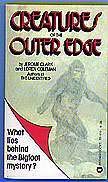 Yes, there are several events every year which have a cryptozoological
theme. Bigfoot gatherings in (1) Newcomerstown, Ohio, (2) Vancouver,
British Columbia, and (3) Washington State, occur annually. In 1999, I
spoke at the first ever International Cryptozoology Symposium at Loch
Ness. Europe has an annual meeting too. The almost now-defunct International
Society of Cryptozoology had annual meeting until the mid-1990s.
Yes, there are several events every year which have a cryptozoological
theme. Bigfoot gatherings in (1) Newcomerstown, Ohio, (2) Vancouver,
British Columbia, and (3) Washington State, occur annually. In 1999, I
spoke at the first ever International Cryptozoology Symposium at Loch
Ness. Europe has an annual meeting too. The almost now-defunct International
Society of Cryptozoology had annual meeting until the mid-1990s.
14. Any theories on why so many lakes across the world
have stories of "lake monsters" attached to them?
Because there's a lot of cryptids, unknown animals, giant catfish, and
other large hidden fish, reptiles, and mammals in them.
15. Has the Internet helped or hurt your work? Considering
the number of e-mails I get about "monsters" in various parts of the country I would
imagine your in-box is full of reports. How do you sort through them all? Do you keep
a database of locations where mysterious creatures have been seen?
I get about 500 emails a day, and answer all of the personal inquiries
sent to me. Yes, I keep many files of cases, sightings, reports, and more.
The democracy of emails and the internet has been great for the field.
16. You written several books on cryptozoology. Is there
one in particular you would recommend to my readers?
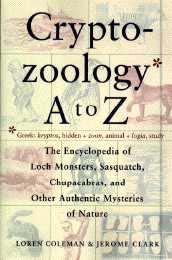 My three most recent ones -
Mysterious America: The Revised Edition
(NY: Paraview, 2001),
Cryptozoology A to Z
(NY: Simon and Schuster, 1999),
The Field Guide to Bigfoot
(NY: Avon, 1999) - give a good overview of many cryptids, plus info on the cryptozoologists
and their cryptozoological expeditions. I'd recommend all of them. See my website at
www.lorencoleman.com
for details.
My three most recent ones -
Mysterious America: The Revised Edition
(NY: Paraview, 2001),
Cryptozoology A to Z
(NY: Simon and Schuster, 1999),
The Field Guide to Bigfoot
(NY: Avon, 1999) - give a good overview of many cryptids, plus info on the cryptozoologists
and their cryptozoological expeditions. I'd recommend all of them. See my website at
www.lorencoleman.com
for details.
17. The Jersey Devil back story is one of the more humorous
accounts of an unknown animal. How seriously do you take the idea that there's a
cryto beastie lurking out in the New Jersey woods?
Not to sound like a broken CD here, but in my newest book,
Mysterious America:
The Revised Edition (NY: Paraview, 2001), there's a whole chapter
on the Jersey Devil. I think that several unknowns may be riding just below
the radar as "Jersey Devils," but the 1909 cases appear to be based on an
elaborate hoax.
18. What's the most unusual thing you've taken with
you when you have gone out on an expedition?
I once took small prehistoric toy figurines of various prehistoric and
living animals with me to Mexico to help in having eyewitnesses pick out
the animals that most looked like the things that they were reporting. It
actually worked as an effective way to make certain that my translator was
getting across the question I wanted ask. And I knew immediately what
animals the eyewitnesses were talking about.
19. What is your favorite television program about
cryptozoology?
Humm, let's see, I guess that would be, In Search Of from the 1970s through
2001, and beyond.
20. Anything else you want to add to this oh so
professional interview?
Derek, you have conducted a very professional interview, and I wish you
great luck in your adventures.
The Loren Coleman website is at
www.lorencoleman.com

